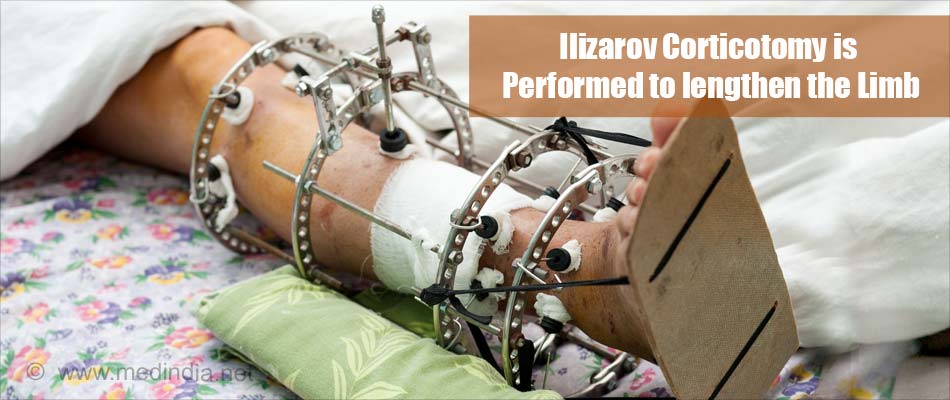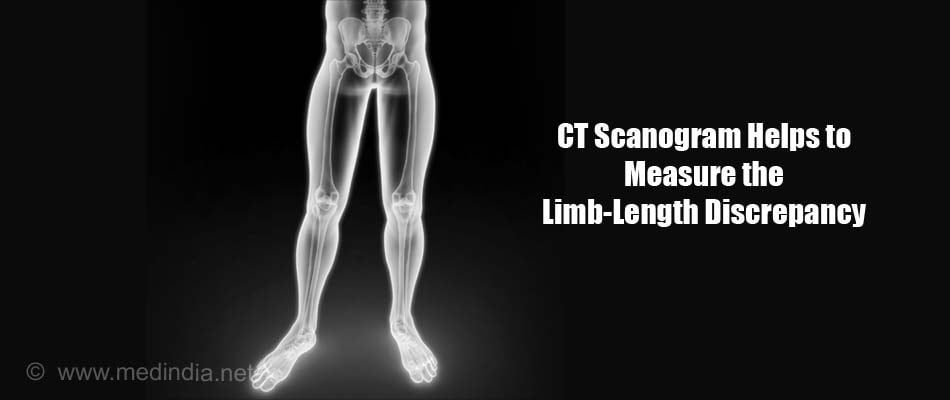What is Corticotomy?
Corticotomy is surgical procedure where the cortex of the bone is cut to stimulate bone formation.
Bones consist of an outer cortex and an inner medulla. The cortex is the hard mineralized part of the bone that gives the bone its rigidity. The medulla is the soft inner part that contains the bone marrow. This bone marrow produces blood cells. As the person grows older the bone marrow gets replaced by fatty tissue in many bones.
The bone is surrounded on the outer side by a membrane called the periosteum. The periosteum consists of two layers, the outer fibrous tissue, and an inner osteogenic layer that contributes to the formation of bone cells.
During the surgical technique of corticotomy, the cortex is deliberately fractured. The fracture acts as a stimulus to promote new bone formation. The technique has been adopted in orthodontics and in orthopedics for certain conditions where quick bone growth is required.
What are the Indications of Corticotomy?
Corticotomy is performed as a dental or an orthopedic procedure:
- As a dental procedure: Corticotomy is used to stimulate bone growth in adult patients who undergo orthodontic treatment i.e. put braces to re-align their teeth. Braces for crooked or overcrowded teeth are usually applied in adolescents. They work on the principle that a prolonged gentle force applied to the teeth stimulates bone remodelling, and allows the teeth to move. However, many people miss out on the procedure in their younger days, and may want to undergo it during adulthood. Bone growth is much slower during adulthood, and therefore, corticotomy is done to stimulate bone formation in such patients. Corticotomy forms a part of the periodontally accelerated osteogenic orthodontics (PAOO) technique, which also includes orthodontics and the placement of a bone graft. It can be done either on the upper or the lower jaw.
- As an orthopedic procedure: Corticotomy is used as a limb-lengthening procedure using the Ilizarov method. Limb-lengthening is done for individuals in whom one leg is shorter than the other, often due to conditions like previous fractures or birth defects. It is preferred for patients with a limb-length discrepancy of between 6 and 15cm. Discrepancies of more than 15cm may require combination of limb-lengthening with other procedures.

In the procedure referred to as distraction osteogenesis, corticotomy is performed and then a gradual traction is applied to the parts of the bone that have been partially separated by corticotomy. The corticotomy stimulates bone growth in between the fractured parts and thereby contributes in increasing the length of the bone.
What happens before, during and after the Dental Corticotomy Procedure?
For the dental procedure, the orthodontist will first examine your teeth and plan out the type of orthodontic treatment that you will require. An x-ray will be obtained to confirm the findings through a quick and painless procedure where you will be asked to bite on a mouthpiece. The orthodontist and the dental surgeon who will be performing the corticotomy will discuss the best way forward. You will be asked to stop any blood thinners that you may be taking before the procedure.
During the Procedure
- The corticotomy procedure for the PAOO technique is done under local anesthesia.
- A flap of the gum is raised so that the surgeon obtains access to the jaw bone next to the malpositioned teeth.
- The surgeon makes the flap in such a way that the aesthetics will not be affected after its repositioning.
- This is followed by the corticotomy of the bone, which is performed using using low-speed round burs or a piezoelectric knife. The corticotomy is done on the inner as well as the outer aspects of the alveolar bone, the bone that holds the tooth.
- The next step in the PAOO technique is the insertion of a bone graft, which could be your own bone obtained from another site or a bovine graft.
- The flap is then closed using non-absorbable sutures, which are removed after one to two weeks.
After the Procedure
After the procedure, you may be prescribed an antibiotic and painkillers. You can eat soft foods till you are comfortable enough to eat more solid food.
Following the corticotomy, the dentist has a very short window period during which the entire orthodontic procedure should be completed to get the maximal benefits of the corticotomy. The orthodontic procedure should be started within two weeks of the corticotomy. Since the teeth move faster, the orthodontic adjustments should be done at intervals of less than two weeks. The procedure is usually completed in 6 months.
What happens before, during and after the Orthopedic Surgery?
For the orthopedic procedure, the surgeon will ask you to undergo tests like a CT scan or an MRI. During these procedures, you will have to lie down on a table. During a CT scan, a scanner will pass over the part of the body to be scanned, while for an MRI, the table will move into a tubular machine. X-ray procedures like teloengenogram and orthoroentgenogram, and scanogram using CT scan or x-ray are used to measure the limb-length discrepancy.

Type of Anesthesia – The limb lengthening procedure is done under general anesthesia. You will be asleep during the procedure and will not be aware of what is going on.
Pre-operative Check-up – Routine tests as indicated above are ordered a few days before the surgery. These include:
- Blood tests like hemoglobin levels, blood group, liver and kidney function tests
- Urine tests
- ECG to study the electrical activity of the heart
- Chest x-ray
In older patients, a detailed assessment of the heart maybe required
Admission is required a day or two before the surgery. You will be advised to stop taking aspirin or blood thinners a few days before the procedure.
Fasting before surgery - Overnight fasting is required and occasionally intravenous fluid maybe required to keep you well hydrated. Sedation is sometimes required for good overnight sleep before the surgery.
Shift from the ward or room to the waiting area in the operating room - An hour or two before the surgery, you will be shifted to the operating room waiting area on a trolley.
Once the surgical room is ready, you will be shifted to the operating room.
Shift to the Operating room - The ambience in the operating room can sometimes be very daunting and a small amount of sedation can help overcome your anxiety. From the trolley, you will be shifted on to the operating table.
Anesthesia before surgery - The anesthetist will inject drugs through an intravenous line and make you inhale some gases through a mask that will put you in deep sleep.. Once you are in deep sleep, a tube will be inserted into your mouth and windpipe to administer the anesthesia gases to overcome pain and keep you comfortable.
During the Procedure
- The limb that has to be operated on will be sterilized and fixed using a bulky instrument called the Ilizarov ring fixator.
- Wires will be passed through the skin and the bones through drilling and attached to external metal rings.
- Once the instrument is fixed, a small skin incision will be made, and corticotomy is carried out at the predetermined site with the help of an instrument called an osteotome, which causes a fracture in the bone.
- The medulla of the bone is not damaged and the periosteum is also kept intact, except at the point of entry. Thus, the blood supply of the bone is preserved.
- The skin incision is then closed with sutures.
After the Limb lengthening Procedure
Waking up from Anesthesia – Once the surgery is over you will wake up and the tube down the wind pipe will be removed. You will be asked to open your eyes before the tube is removed. You will be sedated and the voice of the anesthetist may be faint. Once the tube is out, you may have cough and sometimes nausea.
There may be a tube going into the stomach called a nasogastric or Ryle’s tube to keep it empty. There will also be an intravenous line. You will remain on oxygen. Once fully awake, you will be shifted on the trolley and taken to the recovery room. The fixator will be attached to your operated limb.
Recovery room – In the recovery room, a nurse will monitor your vitals and observe you for an hour or two before shifting you to the room or a ward.
Painkillers may be prescribed depending on the extent of the pain.
Post-operative recovery – You will be allowed to walk soon after the procedure, depending on your comfort. In fact, early movement after the procedure is encouraged. Following the surgery, the fixator will be regularly adjusted so that there is distraction at the corticotomy site that stimulates new bone formation and thereby lengthens the bone. It may take a few months for optimal results, and may be inconvenient due to the bulkiness of the fixator.
Physical therapy is also necessary to maintain the function of all the muscles and joints. Once the new bone appears strong enough, the fixator is removed.
What are the Risks / Complications of Corticotomy?
Complications of corticotomy following the dental procedure are usually minimal. They may include:
- Minimal interdental bone loss
- Loss of gum tissue
- Pain and swelling for a few days following the surgery
Complications following the limb lengthening procedure may include:
- Damage to nerves and blood vessels in the limb
- Infection
- Muscle contracture if the limb is not exercised enough
- Suboptimal results of the surgery









